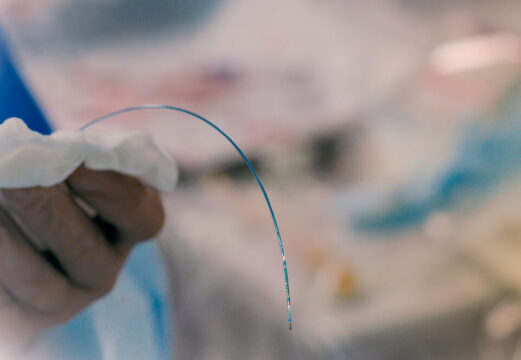Provisional stenting (PS) is the gold standard for percutaneous coronary intervention (PCI) in most patients with coronary bifurcation lesions (CBL). Moreover, recent studies such as EBC MAIN (Left Main Study of the European Bifurcation Club) and EBC TWO (European Bifurcation Coronary Study Two) have shown that, in the treatment of true left main coronary artery (LMCA) lesions or large coronary bifurcations, the clinical outcomes with PS are comparable to those obtained with an initial two-stent strategy.

Provisional stenting requires two fundamental steps: stent implantation in the main vessel, followed by post-dilation of the proximal stented segment using the proximal optimization technique (POT). However, the optimal treatment strategy for the side branch is still uncertain. Currently, there are two main sequences: POT-kissing-POT (PKP) and POT-Side-POT (PSP). In preclinical studies, the PSP sequence has proven to be more effective in preserving stent diameter in the proximal segment, while the PKP sequence has shown better stent expansion in the distal segment.
The objective of this prospective, randomized study was to compare the PKP and PSP sequences using optical coherence tomography (OCT) to assess the differences in stent configuration.
The primary endpoint (PEP) was minimum stent expansion (MSE) in the distal main vessel (MV) segment. Secondary endpoints (SEPs) included MSE in other segments, maximum malapposition distance, and malapposition area. Other evaluated SEPs were the stent under-expansion rate, malapposition, dissection at the proximal stent edge, tissue prolapse, intracoronary thrombus, and side-branch ostium dissection or in-stent dissection.
Between 2023 and 2024, operators performed a total of 60 procedures, randomized 30:30 for each sequence. The mean patient age was 70 years. In post-procedural OCT, MSE at the distal MV segment was significantly higher with the PKP sequence compared to the PSP sequence (99.3±12.7% vs. 83.8±19.5%; p <0.001). Other relevant findings included a higher rate of malapposition in the bifurcation core and the distal MV segment with PSP, as well as better side-branch structure with PKP. There were no significant differences in stent eccentricity between PSP and PKP in any of the analyzed segments.
Conclusion
This is the first randomized study comparing different provisional stenting sequences. The findings suggest that the use of the PKP sequence is associated with better stent configuration in the bifurcation core and distal MV segment, with higher expansion and lower malapposition rates compared to the PSP sequence. However, further studies are needed to validate these results in larger and more diverse populations to optimize stenting strategies for bifurcation lesions.
Original Title: Comparison of stent geometry achieved by different side-branch ballooning techniques for bifurcation provisional stenting: THE CRABBIS TRIAL.
Reference: Francesco Bianchini, MD et al JACC 2025.
Subscribe to our weekly newsletter
Get the latest scientific articles on interventional cardiology





